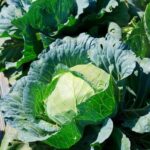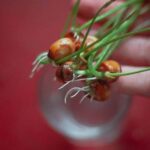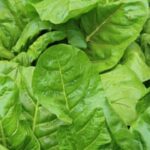Are you interested in starting a vegetable gardening in pots? This article will provide you with plenty of ideas on how to get started.
Whether you have limited outdoor space, want to grow vegetables closer to your kitchen, or simply love the aesthetic appeal of container gardening, there are many benefits to cultivating a potted vegetable garden. In this section, we’ll explore the advantages of growing vegetables in pots and why it’s a great option for both experienced and novice gardeners.
One of the key benefits of vegetable gardening in pots is the ability to grow fresh produce even if you have limited outdoor space. Whether you live in an apartment with a small balcony or have a tiny backyard, container gardening allows you to cultivate a variety of vegetables without the need for a traditional garden plot.
Additionally, growing vegetables in pots can also be more convenient, as it brings the plants closer to your kitchen for easy access when cooking.
Not only does vegetable gardening in pots offer practical benefits, but it also provides an opportunity for creativity and flexibility. You can experiment with different container sizes, shapes, and materials to create visually appealing arrangements while maximizing your available space. With the right guidance and ideas, you can enjoy a bountiful harvest of homegrown vegetables right from your potted garden.
Choosing the Right Vegetables for Container Gardening
When it comes to vegetable gardening in pots, choosing the right vegetables is crucial for a successful and bountiful harvest. Not all vegetables are well-suited for container gardening, so it’s important to select those that thrive in confined spaces. Consider the size of your pots, the amount of sunlight they receive, and the climate in your area when choosing what to plant.
Best Vegetables for Container Gardening
Some of the best vegetables for container gardening include tomatoes, peppers, lettuce, spinach, radishes, carrots, green onions, and herbs such as basil and cilantro. These vegetables are compact and don’t require a lot of space to grow. Additionally, they can flourish in containers on patios, balconies or even inside apartments with adequate sunlight.
Vegetables to Avoid
While many vegetables can thrive in containers, some may not be suitable due to their extensive root systems or large size. These may include pumpkins, watermelons, corn, and other sprawling or deep-rooted plants. These types of vegetables often require more space than most containers can provide and are better suited for traditional garden beds.
Selecting a Variety of Vegetables
To maximize your potted vegetable garden’s potential and ensure a diverse harvest throughout the season, consider selecting a variety of vegetables with different growth rates. This way you can stagger planting times or rotate crops as needed. Additionally, combining complementary plants such as tomatoes and basil can not only save space but also provide natural pest control and enhance flavor when cooking with homegrown produce.
Container Selection
When it comes to vegetable gardening in pots, choosing the right containers is essential for the success of your garden. The first thing to consider when selecting pots for your potted vegetable garden is size. Larger vegetables, such as tomatoes and peppers, will need bigger pots to accommodate their root systems and provide them with enough space to grow. On the other hand, smaller vegetables like herbs and lettuce can thrive in smaller pots.
In addition to size, it’s important to choose containers that have good drainage. Proper drainage is crucial for preventing waterlogged soil, which can lead to root rot and other issues. Look for pots with drainage holes at the bottom or consider adding a layer of gravel or broken pottery to the bottom of the pot before adding soil.
Another factor to consider when selecting pots for your vegetable garden is material. While plastic pots are lightweight and affordable, they can deteriorate over time when exposed to sunlight. On the other hand, terracotta or clay pots are more durable but are heavier and may require more frequent watering due to their porous nature.
| Consideration | Recommendation |
|---|---|
| Size | Choose larger pots for larger vegetables and smaller pots for smaller vegetables. |
| Drainage | Select containers with proper drainage holes or add a layer of gravel at the bottom. |
| Material | Consider the durability and weight of different pot materials such as plastic, terracotta, or clay. |
By carefully considering these factors and taking your specific needs into account, you can find the perfect pots for your potted vegetable garden that will promote healthy growth and a bountiful harvest. With the right containers in place, you’ll be well on your way to enjoying homegrown vegetables right from your own patio or balcony.
Soil and Fertilizer Tips for Successful Potted Vegetable Gardens
When it comes to vegetable gardening in pots, one of the most important factors for success is the soil and fertilizer you use. The quality of your soil and the nutrients you provide will directly impact the health and productivity of your potted vegetables. Here are some tips for ensuring that your potted vegetable garden thrives.
Choosing the Right Soil
The first step in creating a successful potted vegetable garden is to select the right soil. Look for a high-quality potting mix that is specifically formulated for containers. These mixes are typically lightweight, well-draining, and nutrient-rich, providing the ideal environment for healthy root growth. Avoid using regular garden soil in your containers, as it can become compacted and hinder plant growth.
Fertilizing Your Potted Vegetables
In addition to using a premium potting mix, it’s essential to supplement your potted vegetables with fertilizer. Since container gardens have limited space, nutrients in the soil can quickly become depleted as plants grow and produce fruits. Choose a slow-release organic fertilizer or a liquid fertilizer that is formulated for vegetables. Be sure to follow the application instructions on the product label to avoid over-fertilization, which can harm your plants.
Compost and Natural Amendments
Consider incorporating compost and natural amendments into your potted vegetable garden’s soil to enhance fertility. Compost adds valuable organic matter and beneficial microorganisms to the soil, promoting overall plant health. You can also use natural amendments such as fish emulsion, bone meal, or kelp meal to provide specific nutrients that may be lacking in your potting mix.
By paying close attention to your soil quality and providing adequate nutrients through fertilization and natural amendments, you can set the stage for a bountiful harvest of homegrown vegetables from your potted garden.
Watering and Maintenance
When it comes to successful vegetable gardening in pots, proper watering and maintenance are essential for keeping your plants healthy and thriving. With the right techniques and some practical tips, you can ensure that your potted vegetables receive the care they need to produce a bountiful harvest.
One of the most important aspects of watering your potted vegetables is ensuring that they receive the right amount of water. Overwatering can lead to root rot, while underwatering can result in stunted growth and poor fruit development. It’s crucial to strike the right balance by checking the moisture level of the soil regularly and adjusting your watering schedule as needed.
In addition to watering, regular maintenance is key to keeping your potted vegetables healthy. This includes pruning, fertilizing, and monitoring for pests and diseases. By staying on top of these tasks, you can help prevent issues before they become a problem and promote strong, vigorous growth in your container garden.
Finally, when it comes to maintenance, it’s also important to provide adequate support for your potted vegetables as they grow. Many vining or tall-growing plants will benefit from trellises or stakes to keep them upright and maximize space in your container garden. By incorporating these practices into your routine, you can ensure that your potted vegetables stay healthy and productive throughout the growing season.
| Aspect | Details |
|---|---|
| Watering | Proper amount of water is crucial for plant health |
| Maintenance | Pruning, fertilizing, pest monitoring are important tasks |
| Support | Trellises or stakes may be necessary for tall-growing plants |
Creative Ideas for Vertical and Hanging Vegetable Gardens
Vertical and hanging vegetable gardens offer a unique and space-saving way to grow your own produce, even if you have limited outdoor space. Here are some creative ideas for maximizing your vertical and hanging vegetable garden:
- Use a trellis: Trellises are a great way to support vining vegetables such as cucumbers, peas, and tomatoes. You can easily make your own trellis using bamboo poles or wooden stakes. Consider placing the trellis against a wall or fence to save even more space.
- Hanging baskets: Utilize hanging baskets to grow vegetables like cherry tomatoes, peppers, and strawberries. Hang the baskets from an overhead structure or railing to keep them off the ground and out of the reach of pests.
- Vertical planters: Vertical planters come in a variety of designs and can be used to grow a wide range of vegetables. Look for stackable containers or wall-mounted planters that allow you to plant herbs, lettuce, kale, and other compact-growing vegetables.
- Repurpose old items: Get creative by repurposing everyday items into vertical garden containers. Old pallets can be transformed into vertical planters by adding pockets for soil and plants. You can also use guttering mounted on a wall to create a unique vertical gardening space.
By implementing these creative ideas for vertical and hanging vegetable gardens, you can take advantage of unused space while enjoying the beauty and bounty of homegrown produce.
Tips for Maximizing Space in Small Container Gardens
Small container gardens can be a great solution for urban or limited space dwellers who still want to enjoy the benefits of vegetable gardening. Here are some tips for maximizing space in small container gardens:
1. Utilize vertical space: Consider using trellises, stakes, or hanging baskets to grow vining vegetables such as tomatoes, cucumbers, or beans. This not only saves space on the ground but also encourages upward growth, making it easier to harvest your vegetables.
2. Choose compact varieties: When selecting vegetables for your small container garden, opt for compact or dwarf varieties that are specifically bred for smaller spaces. Look for words like “patio,” “bush,” or “miniature” on seed packets or plant tags.
3. Companion planting: Maximize the space in your containers by practicing companion planting, which involves growing different types of plants together that benefit each other in some way. For example, planting lettuce around the base of a taller tomato plant can provide shade and moisture retention for the lettuce while utilizing the space around the tomato.
4. Succession planting: Instead of planting all your vegetables at once, stagger your planting times so that as one crop is harvested, another can take its place in the same container. This allows you to continually produce fresh vegetables throughout the growing season.
5. Utilize every available surface: Get creative with where you place your containers – consider using window sills, balcony railings, or even hanging pots from a sturdy overhead structure to maximize your growing area.
By implementing these tips and ideas for maximizing space in small container gardens, you can still enjoy a bountiful harvest of homegrown vegetables regardless of limited space constraints.
Addressing Common Challenges and Pests in Potted Vegetable Gardens
Potted vegetable gardens come with their own set of challenges and potential pest problems. It’s important to address these issues early on to ensure the success of your container garden. One common challenge in potted vegetable gardening is the limited space, which can lead to overcrowding and poor air circulation.
This can create the perfect conditions for pests and diseases to thrive. To address this, it’s important to properly space out your plants and regularly inspect them for any signs of pests or diseases.
Another common issue in potted vegetable gardens is the risk of nutrient deficiencies in the soil. Since container gardens have limited soil volume, nutrients can become depleted more quickly than in traditional garden beds. To combat this, it’s important to regularly fertilize your potted vegetables with a balanced fertilizer to ensure they have all the necessary nutrients for healthy growth.
Pests such as aphids, spider mites, and caterpillars can also wreak havoc on potted vegetable plants. To address these pests, consider using natural insect repellents such as neem oil or insecticidal soaps. Additionally, introducing beneficial insects like ladybugs or lacewings can help keep pest populations in check.
It’s important to regularly inspect your plants for any signs of pest damage and take action promptly to prevent infestations from getting out of control. By being proactive about addressing common challenges and pests in potted vegetable gardens, you can enjoy a thriving container garden full of healthy, homegrown produce.
Harvesting and Enjoying the Fruits of Your Labor
In conclusion, vegetable gardening in pots is a rewarding and accessible way to enjoy fresh, homegrown produce, even if you have limited space. The convenience of having a mini garden right outside your door means you can easily harvest the vegetables at the peak of their ripeness, ensuring optimal flavor and nutrition. Cooking with your homegrown potted vegetables not only allows you to savor the fruits of your labor but also opens up a world of culinary possibilities.
By incorporating your freshly harvested potted vegetables into your cooking, you can elevate the flavor and nutritional value of your meals. Whether you’re tossing freshly picked tomatoes into a salad, sautéing homegrown peppers for a stir-fry, or incorporating herbs into your favorite dishes, the taste and quality of homegrown produce are truly unparalleled. Additionally, cooking with potted vegetables allows for experimentation with different varieties and flavors that may not be readily available at the grocery store.
As you embark on this culinary journey with your homegrown potted vegetables, remember to savor each moment and appreciate the hard work that went into cultivating these tasty treasures. Whether you’re enjoying a simple salad or preparing an elaborate meal, cooking with homegrown potted vegetables adds an extra layer of satisfaction to every bite.
So get creative in the kitchen and let your imagination run wild as you explore all the delectable ways to incorporate your fresh harvest into your favorite recipes.
Frequently Asked Questions
Which Vegetables Are Best to Grow in Pots?
Vegetables that are best to grow in pots are those that don’t require a lot of space for their roots to spread out. Some great options include tomatoes, peppers, lettuce, spinach, carrots, radishes, and herbs like basil and parsley.
What Vegetables Grow Well Together in a Container?
When planting vegetables together in a container, it’s important to consider their individual needs. Vegetables that grow well together in a container are those with similar sun, water, and soil requirements. For example, tomatoes and basil make good companions as they both enjoy the same growing conditions.
How Deep Should a Container Vegetable Garden Be?
The depth of a container for a vegetable garden depends on the type of vegetable you plan to grow. In general, most vegetables need at least 6-12 inches of soil depth for their roots to grow properly. However, root vegetables like carrots or potatoes may need deeper containers of around 12-18 inches.

If you’re looking to get into vegetable gardening, or are just looking for some tips on how to make your current garden better, then you’ve come to the right place! My name is Ethel and I have been gardening for years. In this blog, I’m going to share with you some of my best tips on how to create a successful vegetable garden.





